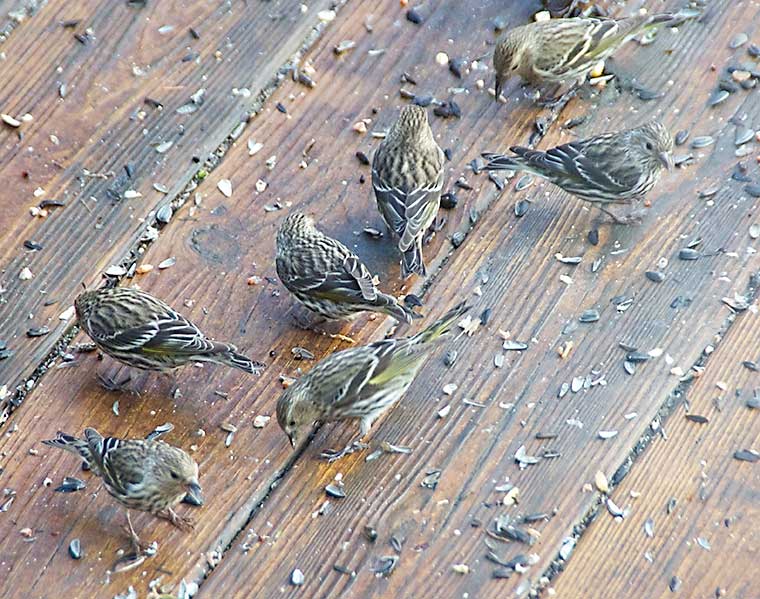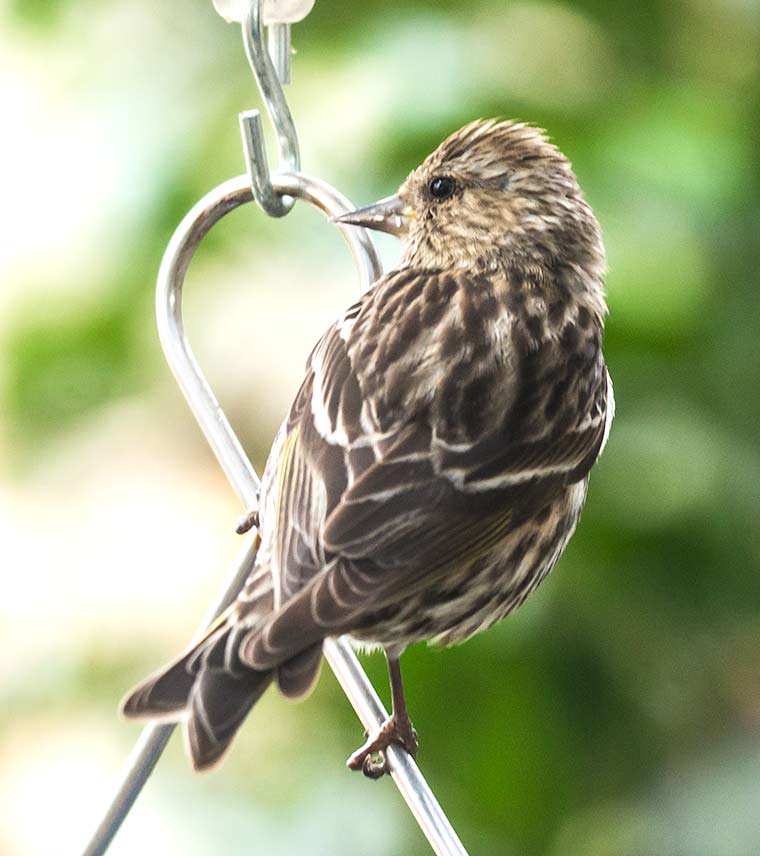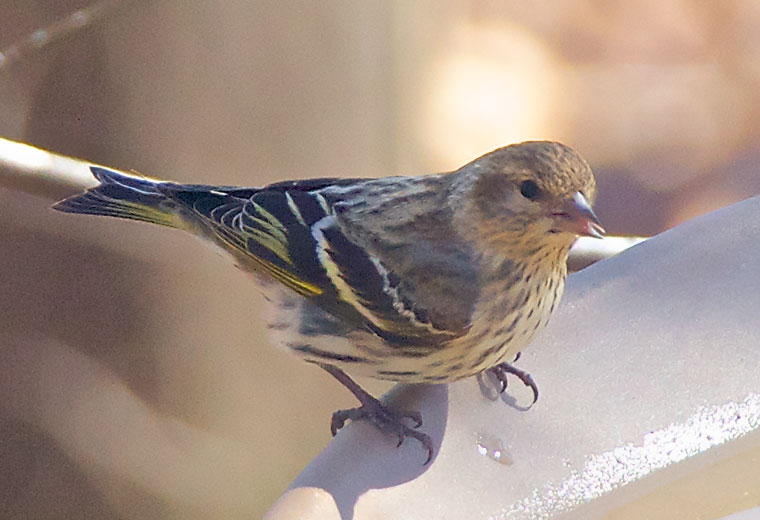We still have Pine Siskins (Spinus pinus) hanging around. They normally breed far to the north and visit our area only in the Winter. They should be heading back north soon. However, Pine Siskins are one of the species classified as “irruptive winter finches”, which means that their migratory movements are extremely variable from year to year. So the numbers present and the times of their arrival and departure are not very predictable.
This time of year, Pine Siskins often travel in mixed flocks with Purple Finches (Haemorhous purpureus), House Finches (Haemorhous mexicanus), and Goldfinches (Spinus tristis). They are small birds, slightly smaller than a Goldfinch.
There are about 16 species of Spinus, and they are distributed worldwide. Their song is similar to that of their better-known close relative, the Goldfinch. In fact, Pine Siskins have been called “goldfinches in disguise”. The name “siskin” is thought to have an onomatopoeic origin. Siskins have a flight call that is described as an ascending wheezy zwee or sweeerrt. In some European languages the common name of these birds is an apparent attempt to spell out this call. Thus in a German dialect the common name is “zeisig”, in Hungarian it is “csíz”, in Latvian “cīskens..
The scientific name is also interesting. Spinus is the Ancient Greek name given to these birds. This name may refer to some “spiny” feature of the bird, possibly its sharp beak, and “pinus” refers to the tree that they favor for nesting.
The individual pictured above is waiting its turn on the sunflower seed feeder outside our kitchen window.The forked tail characteristic of the species can be seen.
Many Pine Siskins have a characteristic yellow or white fringe along the side of the wings and the tail.



